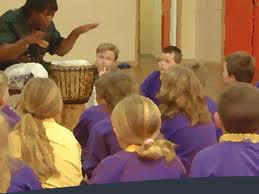
In Part 1 I asked, “What if I could suggest a Sunday School lesson method which will increase involvement/participation, retention (remembering), evangelism, and preparation of new teachers? Would you be interested in the method?” In Part 2, I overviewed suggested steps of the Bible story telling method and pointed out times when the method naturally increases involvement and participation. In Part 3, I focused on times when the method improves and increases retention (remembering) of the Bible teaching and truth. In Part 4, I will examine ways this method increases the potential for reaching out and evangelism.
MOMENTS OF METHOD OPPORTUNITY. There are several times and ways in which story telling the Bible makes reaching out and evangelism more likely and more natural. Consider the following:
- MEMORABLE. Stories tend to be memorable for most people. While this is especially true for oral learners, a good story captivates most hearers. It pulls in their attention. They can “see” the story in their minds while listening to the story. That combination of “seeing” and hearing adds retention. That makes a well-told Bible story more likely to impact listeners, including those who are lost.
- POWERFUL. We have this promise: “so shall my word be that goes out from my mouth; it shall not return to me empty, but it shall accomplish that which I purpose, and shall succeed in the thing for which I sent it” (Isaiah 55:11, ESV). Since Avery Willis Jr. identified 888 stories in scripture, story telling the Bible must have been important. God is drawing people to Him through His Word.
- TRANSMISSIBLE. Partly because stories are more memorable, they are also more easily transmissible for most people. We will seldom tell others what we do not remember. When we tell the story, it becomes even more alive for us. And telling means more people will hear the Bible story. Encouraging hearers on Sunday morning to share the Bible story during the week is a natural follow up and expression of the learning experience.
- ASSIGNMENT. The natural result of every Bible study session should be personal application of God’s Word and commitment to obey. Lessons will tend to be stronger when they allow participants time to exercise obedience in class and to consider doing so during the week. One way to encourage this is to ask learners to share the story. This could be done first with family, then with friends, and then with others who cross our path during the week.
- REVIEW. One part of every lesson is to ask (at the beginning of the session) what the scripture story was about last week, what the point of the story was, and what they did to live out the truth. This allows attenders to tell their own story about sharing God’s story. As learners get more comfortable telling their story, they will be even more comfortable sharing God’s story with unchurched and lost people in daily interactions.
- POINT TO SCRIPTURE. When someone asks a question about the story that you cannot answer, it is natural to point to the Bible. It is an open door to check out together what the passage says. If other scripture comes to mind or is appropriate, feel free to share it. But look for answers in God’s Word rather than personal opinions.
- NOT INTIMIDATING. Using the proposed method of story telling the Bible does not intimidate listeners. They don’t feel like they have to be experts to understand. This makes those who have little exposure to God’s Word more willing to listen and participate in a Bible study session. And it helps attenders feel more comfortable inviting friends.
- TEACHABLE MOMENT. Since stories are so memorable, God can use these stories in conversation as you walk through life. When a conversational door opens, it will be natural to share what you remember that is appropriate to the context. This also opens up doors to talking about the class and its benefits that you have received.
How would you implement story telling the Bible in your class? You might begin by using the principles above to tell the Bible story without adding the other method elements suggested. Then you might add the rebuilding and continue as normal. Then you might add the questions. I have not yet been with a group that has a negative reaction to any part of this method. And participants have been open and honest in response to the questions. They enjoyed participating.
In Part 5 of this series, I will conclude with a look at how story telling the Bible can lead to an increase in new teachers. Pray. Prepare well. Give God your best. Tell the Bible story. Use this method, and come back to this post with a report of the response of your group. Or ask questions or share your comments. Give God your best effort in leading His people to know and live out His Word! Be revolutionary!
Leave a Reply